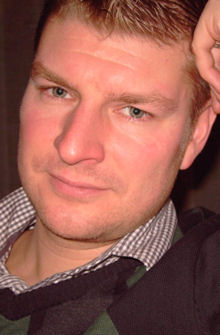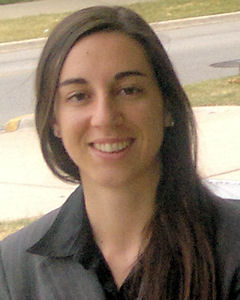The 4th International Water Association Wastewater Treatment Modeling Seminar (WWTmod2014), organized by the International Water Association (IWA; London) and the Water Environment Federation (WEF; Alexandria, Va.), took place in Spa, Belgium, March 30 – April 2. The seminar brought together 137 leading wastewater modeling experts from around the world. Almost half of those attending were young water professionals — the next generation of modelers.
Organized by the Specialist Group on Modeling and Integrated Assessment, WWTmod2014 has been the point of reference for wastewater treatment-process modeling professionals coming from academia, the industry, utilities, consultancies, software companies, and other water-sector groups. These seminars provide a platform to discuss any relevant aspect of wastewater treatment modeling with the objective of building consensus.
The seminar began on March 29 with a young water professionals’ workshop, where attendees discussed data issues and overcoming barriers to innovation in process modeling. Six workshops held on March 30, prompted rigorous discussion, debate, and idea sharing, with the goal of reaching compromise. Each featured small groups that enabled attendees to take an active role by presenting or moderating discussions. The following workshop themes were selected by the WWTmod2014 technical program committee based on “WWTmod seminar series” LinkedIn site discussions:
- Where are we, and where should we go with membrane bioreactor (MBR) modeling? As the first appearance of this topic at a WWTmod seminar, the workshop discussed important challenges in the mathematical modeling of MBR processes. Speakers presented state-of-the-art modeling of biological and filtration processes, new approaches to help improve model predictions, and process monitoring and control. Attendees participated in an extensive discussion on MBR optimization in terms of modeling and control both at pilot- and full-scale processes. And speakers presented examples of full-scale applications that attendees critically evaluated. During the workshop, attendees agreed to create an IWA Task Group on MBR modeling.
- What do we need for “Total” Nitrogen modeling? This workshop addressed mathematical modeling of both conventional- and novel-nitrogen transformation pathways. Attendees discussed modeling nitrification, anammox, heterotrophic denitrification, and nitrous-oxide production processes. For each of these processes, speakers presented information on existing model structures and how well they reflect mechanisms and interactions. Attendees discussed possible mechanisms being overlooked by current models, specific data requirements, and issues with nitrogen modeling in practice.
- How can modeling be effectively used for energy-balance optimization? This workshop covered energy modeling in wastewater treatment processes from two different perspectives — consuming and producing energy. Speakers discussed optimizing aeration requirements through modeling and control approaches as well as modeling of energy production through anaerobic digestion processes. And in an effort to unify the two modeling perspectives, attendees critically evaluated the use of whole-plant energy balances for holistic optimization.
- Revisiting phosphorus removal: do the models give the answers we want? This workshop looked at phosphorus-removal modeling for different processes at various levels of detail. Speakers discussed the mechanisms of both biological and chemical phosphorus-removal processes, interaction of biological- and chemical-removal processes, and the effects of high temperatures on biological phosphorus removal. Speakers presented and attendees discussed challenges to specific efforts such as modeling of struvite precipitation and the practical application of models for whole-plant evaluation. Attendees also agreed to form a task group to address the complexities of phosphorus modeling.
- Linking wastewater treatment modeling with Life Cycle Assessments (LCA) and other holistic models. This workshop evaluated the different methodologies currently employed for LCA with a focus on their usefulness for different applications. In this framework, the use of different technologies commonly considered energy intensive was evaluated using holistic LCA evaluations. Additionally, the topic of the application of LCA to integrated systems and its potential to provide a better understanding of the environmental impacts of the implementation of different technologies was critically evaluated by the workshop attendants.
- Wet-weather modeling: Why and how should we tame the beast? This workshop focused on modeling wet weather flow discharges with the objective of lowering their environmental and public health effects. Speakers presented and attendees discussed the existing challenges for modeling wet weather and their effects on facility behavior. Mitigating undesired effects from wet weather using modeling approaches was evaluated both from a design and control perspective. And attendees discussed the need for innovative wet weather regulatory, design, and operational management strategies.
On March 30, Daniel A. Nolasco from Nolasco & Associates (Oshawa, Ontario, Canada), delivered the opening lecture and offered interesting insights on water resource recovery facility modeling from a consultant point-of-view. On April 1, Robert Schröder, a policy officer from Directorate-General Environment (Brussels, Belgium), delivered a keynote lecture on water policy from a European perspective, focusing on the role of the European Innovation Partnership on Water.
Each dedicated technical session featured two high-quality presentations addressing the general theme and a discussion. The sessions presented cutting-edge modeling developments, innovative applications of existing modeling concepts, and fostered discussion on the scientific significance and practical applicability of the information presented. The scientific committee selected 12 presentations from more than 70 submissions for the following sessions:
- Influent characterization for full-scale modeling. The first presentation characterized unbiodegradable matter and stressed the importance of separately fractionating organic and inorganic unbiodegradable matter. The second discussed the development of an influent generator tool as well as including uncertainty estimation calculations to improve prediction of rainfall variations.
- Impact of diffusion. The first presentation focused on the importance of including diffusion effects in models that describe biofilm processes. The second explained diffusion effects on observed half-saturation constants and the possibility of using this knowledge for their estimation. This idea was humorously illustrated through a “Drinker-Barman Concept,” suggesting that the half-saturation coefficients are related to the rate that substrate diffuses, or the rate the barman can supply drinks to the drinker. Estimating half-saturation constants using this approach could help avoid incorrect parameter calibration.
- Nitrogen modeling extended/revisited. The first presentation evaluated two distinct concepts to model biological denitrification and compared their ability to predict experimental denitrification kinetics. The main difference between these concepts is the nature of substrate competition that was illustrated by comparing the “communist approach” where all substrate is shared, with the “capitalist approach” where there is competition for substrate. The second critically evaluated the results of using different activated sludge models including nitrous oxide emissions to fit four different long-term process data sets.
- WWTP modeling: back to the future. The first presentation described the next generation benchmark simulation model which considered greenhouse gases, phosphorus, sulphur, and micropollutants. The second introduced an innovative modeling framework which incorporates population balance models and its potential benefits in terms of understanding process and predicting performance.
- Primary/secondary sedimentation. The first presentation discussed a new modeling concept and experimental characterization technique for primary settlers. Primary settling modeling has been gaining ground. Current practices commonly treat this unit as black-box despite its potential importance for achieving facility energy neutrality. The second stressed the importance of modeling the effect filamentous bacteria bulking has on secondary settling performance to better predict performance in these units.
- Models for new processes. The first presentation examined the results of applying models to evaluate the mainstream shortcut nitrogen process with the objective of inhibiting nitrite oxidizing bacteria. The second stressed the importance of incorporating additional physical and biological mechanisms in current models to better predict the performance of high-rate activated solids processes.
Active young water professionals led a closing panel. The panel revisited points of divergence that surfaced during session discussions including data sharing and collaboration, and improving current models by better describing half-saturation constants.
WWTmod2014 provided abundant opportunities for networking and building a true group spirit. Some new communication channels enabled the participants to express their opinion during the seminar, such as a real-time voting system several presenters used that allowed attendees to discuss topics online. Workshops, presentations, and discussions produced opportunities for consensus building and resulted in the formation of several research collaborations and task groups. It was a great success, and received significant positive feedback from attendees.
— Marina Arnaldos Orts and Ingmar Nopens, Ghent University










September 23, 2014
Learning Opps, WEF Resources & Efforts